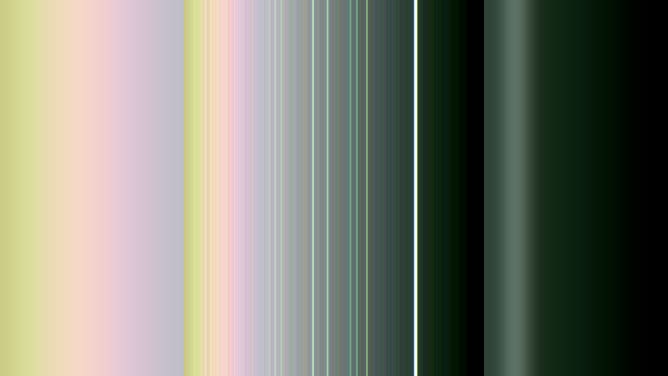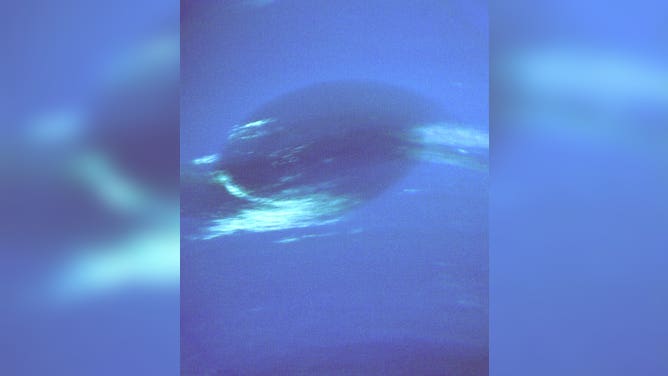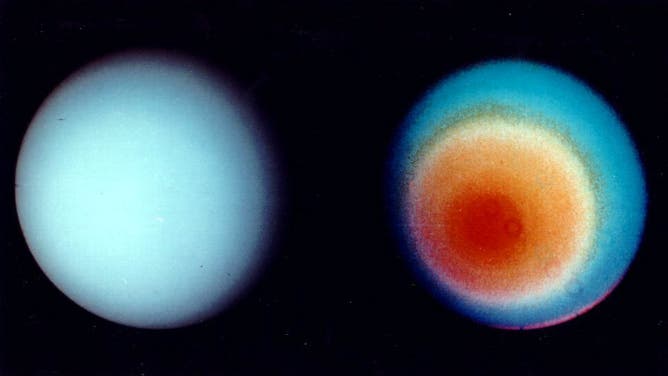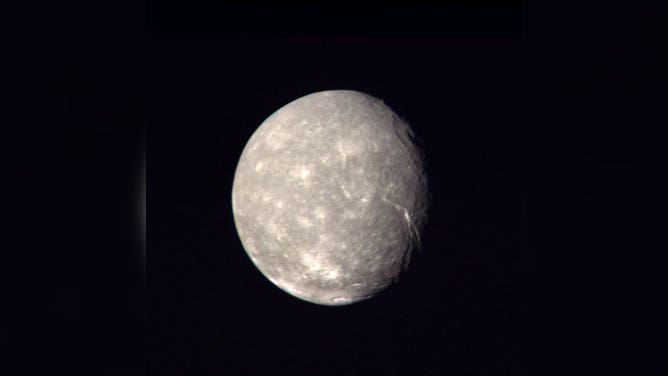Voyager 1 continues zooming through interstellar space 45 years after its launch
Voyager 1 launched on Sept. 5, 1977, from Kennedy Space Center in Florida. The spacecraft and its twin, Voyager 2, continues to send back data from interstellar space 45 years later.
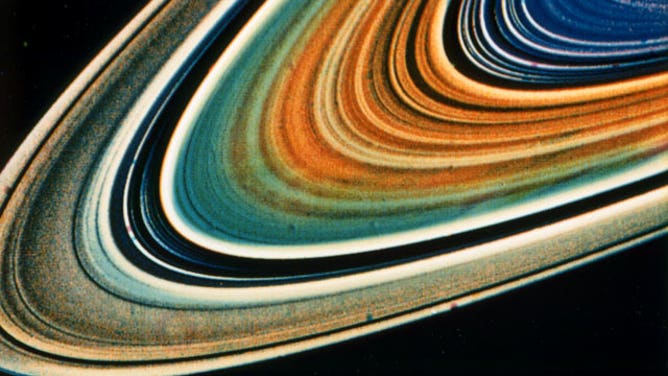
Saturn C-ring and B-ring with many ringlets in false color. Taken by Voyager spacecraft on Aug. 23, 1981. (Image: NASA JPL)
NASA launched twin spacecraft from Earth 45 years ago, and both continue traveling farther than any other human-made object in interstellar space after completing the first tour of the solar system.
Voyager 1 and 2 launched a few weeks apart from NASA's Kennedy Space Center in Florida, taking advantage of a 176-year planetary alignment that made the grand tour of all four giant outer planets possible.
The goal was four planets in 12 years, but the mission would become more than that. Voyager discoveries about Jupiter, Saturn, Uranus and Neptune and their moons, have molded our view of planetary science and inspired new spacecraft missions, some of which have ended as both Voyager spacecraft continue into interstellar space.
Ahead of the launches in 1977, a committee led by Carl Sagan selected images, sounds and messages to be placed on phonograph records and carried on the spacecraft. Known as The Golden Record, each record included instructions on how it could be played if it should be intercepted in space.
After graduation, Linda Spilker started at the perfect time at NASA's Jet Propulsion Laboratory in 1977. Today, she is a Voyager deputy project scientist after coming back to work on one of the first missions of her career.
"Here I am, fresh out of college. You know, I get to go down a few months there to the Cape," she remembered. "I watched the Voyager 2 launch on Aug. 20."
Voyager 1 followed on Sept. 5, 1977. Voyager 2 launched first because the team wanted to choreograph their flights with the planets to capture the moons of Jupiter and Saturn.
HUBBLE TAKES FAMILY PHOTO OF SOLAR SYSTEM'S GIANT PLANETS
"We picked the trajectories to fly through the Saturn system, and we knew with Voyager 2 we wanted to try and go on to Uranus and Neptune. So we needed to set that trajectory up in a way it could do that. And then with Voyager 1, one of the key targets was Saturn's moon, Titan," Spilker recalled.
If the Titan flyby went well, the team would decide whether to send Voyager 2 on to Uranus and Neptune.
"Voyager 1, just the way it worked out, was launched on a slightly faster trajectory and actually got to Jupiter first by about four months, beat Voyager 2, and then flew closer to Jupiter," Spilker said. "So it actually spread out the two flybys of Saturn by almost a year."
The two spacecraft are now traveling about 70 degrees apart outward into the universe. Voyager 1 is about 15 billion miles away, and Voyager 2 is about 12 billion. It currently takes 22 hours for a signal from Earth to reach either spacecraft and two days for a response.
Lone visitors to Neptune and Uranus
Initially, the NASA budget included funding for visiting two planets, but the Voyager team made it work to include Neptune and Uranus.
Spilker said the images Voyager captured of Uranus and Neptune are still some of the best yet because another spacecraft has yet to visit the giant planets.
Voyager 2 made its closest approach to Uranus in 1986, sending back thousands of images and scientific data on the planet and its atmosphere. Those images included 11 previously unseen moons and also found two newly detected rings around the world.
URANUS DISCOVERED 241 YEARS AGO. GET TO KNOW THE 7TH PLANET FROM THE SUN
Voyager 2's last encounter was with Neptune and its moons in 1989. The spacecraft sent back images of a storm system on Neptune known as the Great Dark Spot and details of its rings.
Spilker said the moons of Neptune were fascinating. Voyager 2 is the only spacecraft to fly by the moon Triton with active geysers and a nitrogen-frost atmosphere.
Two visits to Saturn
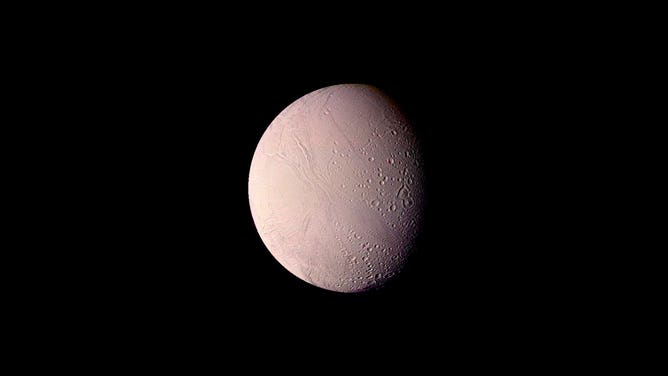
Saturn's moon Enceladus is 310 miles in diameter, as seen from 74,000 miles by Voyager on Aug. 25, 1982. (Image: NASA JPL)
The twin spacecraft would both fly by Saturn nine months apart. Voyager 1 captured the planet and its moons as it began its route out of the solar system.
Although it's hard to pick a few highlights from Voyager, Spilker said seeing the planet's rings in detail for the first time is still among her favorites.
"The rings were incredibly beautiful, and we were thinking they'd be like broad sheets of material and instead finding an incredible level of detail down to the resolution of the cameras," she said.
SEND NUDES: SCIENTISTS PROPOSE BROADCASTING DRAWINGS OF NAKED HUMANS TO ETS
Voyager's filters could not see details on Saturn's moon Titan, but that led to the design of the Huygen probe on NASA's Cassini mission which would reveal details about the liquid methane surface of Titan.
Spilker spent 30 years working on the Saturn Cassini mission before returning to the Voyager program.
"I never imagined that Voyager would outlast Cassini, and it just didn't seem possible that that could happen, and here it's been five years since the Cassini mission ended, so you never know," she said.
The moons steal the show
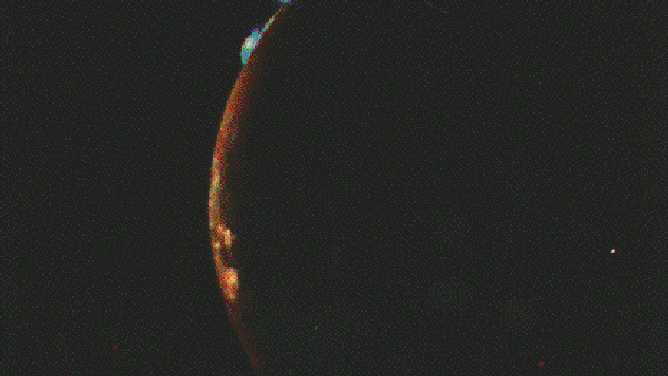
Voyager discovered Jupiter's moon Io has active volcanoes. (Image: NASA JPL)
"We now know that there's incredible diversity with those moons," Spilker said. "We know, thanks to Voyager's observations, some of these moons have liquid water, oceans that could be potential habitats for life. So really, it was paradigm shifting in how we view the planets and the moons in our solar system."
Jupiter's moons Europa and Io were highlights of the mission, with new details discovered by Voyager.
According to NASA, sulfur, oxygen and sodium erupting from Io's volcanoes can be detected on the outer edge of Jupiter's magnetosphere. Scientists believe the moon's volcanoes affect the entire Jovian system.
"With Io, as we got closer, Io kept getting younger and younger," Spilker recalled of Voyager's approach. "It must only be a few hundred million years old. And then pretty soon it was 10 million, and it got younger and younger because the crater size that you could see kept getting smaller, smaller, and there were no craters of that size."
After seeing a fuzzy object near Io, the team soon realized it wasn't something in the background, but rather, it was something coming from Io's surface. Parts of the planet's surface are only minutes old.
Voyager also captured Europa's bright white, icy surface. NASA plans to send a spacecraft to Europa in 2024 to investigate the frozen world further.
A whisper from interstellar space
In 2012, the Voyager 1 spacecraft exited the heliosphere – the protective bubble from solar wind considered to be the boundary of our solar system. Voyager 2 soon followed in 2018, moving about 70 degrees in the opposite direction.
Once a week, the Voyager team gets science data back from both spacecraft, now operating on about 19 watts, which could power the light in your refrigerator. Radioisotopes power the spacecraft through electric generators, and every year, the spacecraft has four fewer watts of power.
"We have to slowly start turning things off. We've turned off all of the instrument heaters on the particle instruments," Spilker said. "The temperature dropped 100 degrees Fahrenheit. And so the temperatures are like freezing cold. These instruments were never designed to work at these temperatures, yet all five instruments are still working, still sending back data."
Using the 70-meter arrays of the Deep Space Network around the world, these "ears" continue to listen for the signal coming back, according to Spilker.
"It's sending a whisper back," she said. "And as it gets further and further away, that whisper is getting fainter and fainter."
Over the following years, the Voyager team will have to make some tough choices, potentially turning off science instruments. Spilker estimates the Voyager spacecraft could last until 2030 or make it to its 50th anniversary.
Either way, Voyager 1 and 2 were designed to last about four years. Both have now lasted 10 times past their warranty and are still going.


